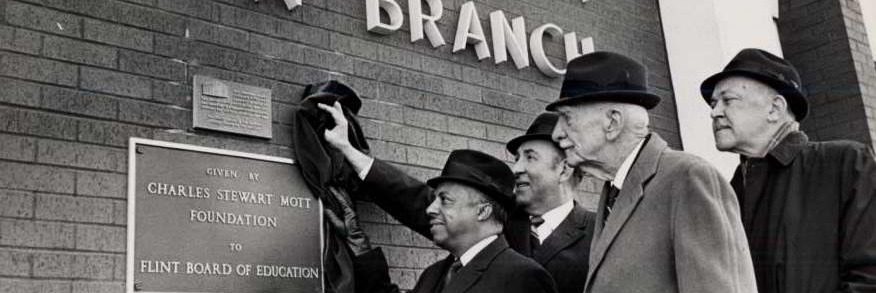The enduring legacy of Charles Stewart Mott and Ruth Mott is their extraordinary commitment to civic participation.
The Mott family dedicated themselves to supporting and improving their community of Flint, Michigan. C.S. Mott and his first wife, Ethel, moved with their three children to Flint in 1907. In the following years, the family would grow and become active participants in the city they called home.
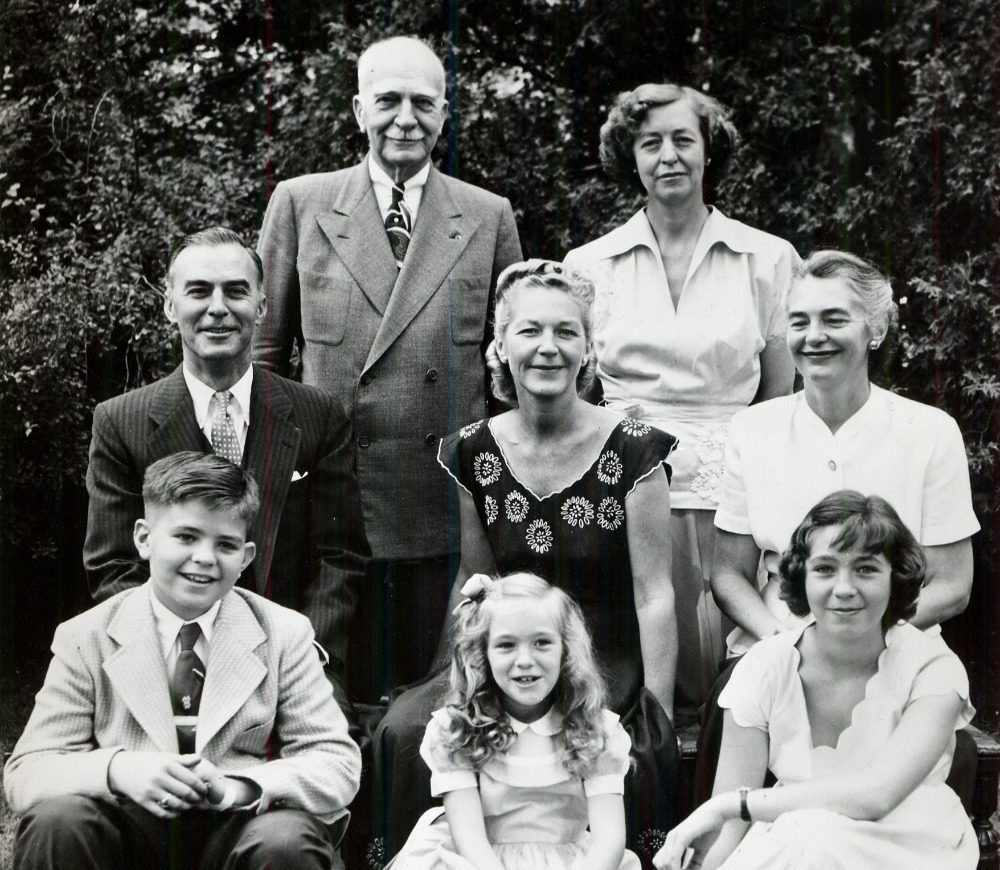
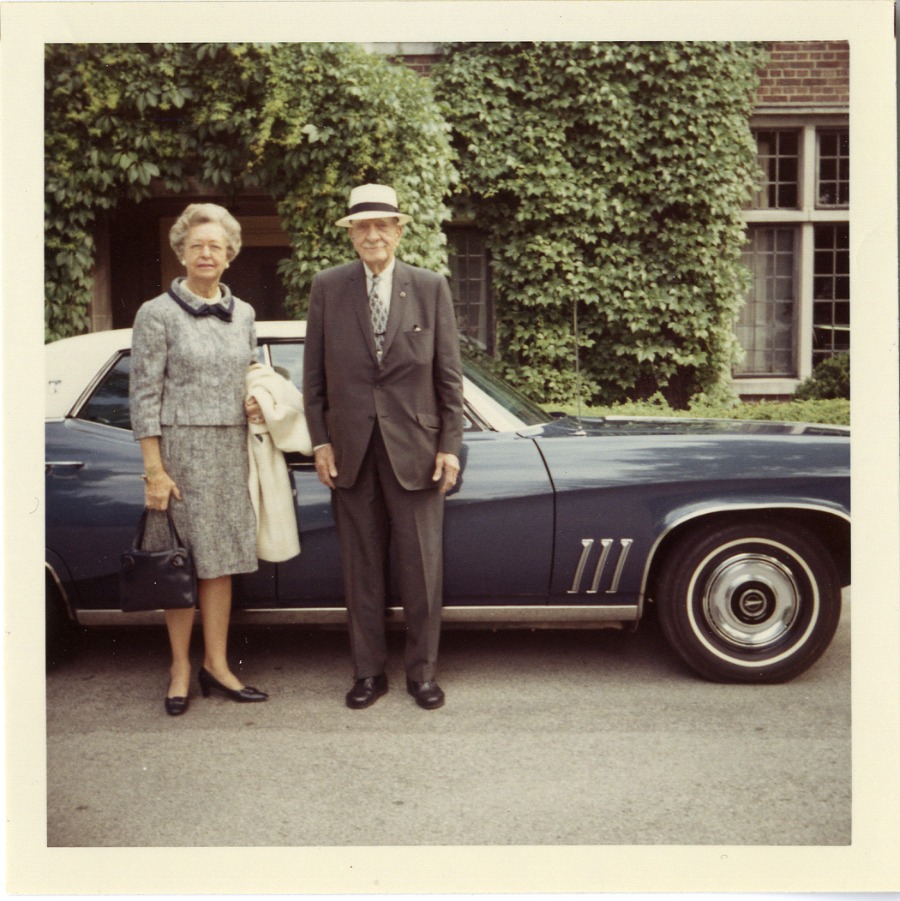
C.S. and Ruth with all of C.S.’s children, 1948. Middle row: Harding, Elsa, Aimeé. Front row: Stewart, Maryanne, and Susan. (Ruth Mott Foundation Archives)
Ruth and C.S. pose outside Applewood near their ’69 Buick Skylark before leaving for a trip, 1969. (Ruth Mott Foundation Archives)
The Mott Family
Charles Stewart Mott
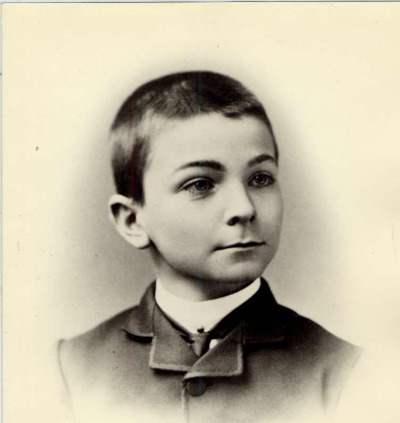
C.S. Mott, 8 years old, 1883. (Ruth Mott Foundation Archives)
C.S. Mott was born in 1875 in New Jersey. A very active and talented young man, he joined his father and grandfather’s business: Mott’s Apple Cider and Vinegar. Despite his father’s best efforts, C.S. did not take an interest in the family business. Instead, he was made secretary of the Weston-Mott Axle Company. This appointment would eventually lead to C.S. helping form General Motors.
The legacy of C.S. Mott lives on in Flint and beyond in many ways, largely through the work of the Charles Stewart Mott Foundation, which provides philanthropic support to organizations across the globe in four main areas: the Flint community, civil society, education, and the environment.
Ethel & Children
C.S. Mott married Ethel Harding in 1900. They had three children together: Aimeé, Elsa, and Charles Stewart Harding Mott II (known as Harding). C.S. and Ethel were active members of the community. C.S. was mayor of Flint for three terms and Ethel joined several clubs and practiced philanthropy alongside her husband.
Sadly, Ethel died in 1924 after falling from a second story window. Over the next five years, C.S. remarried twice. His second marriage to Mitties Butterfield Rathbun ended suddenly after she contracted a rare throat disease on a trip out west and died in 1928. His third marriage to Fernanda Jakoba “Dee” Van Balkom Furey in 1929 ended in divorce nine months later.
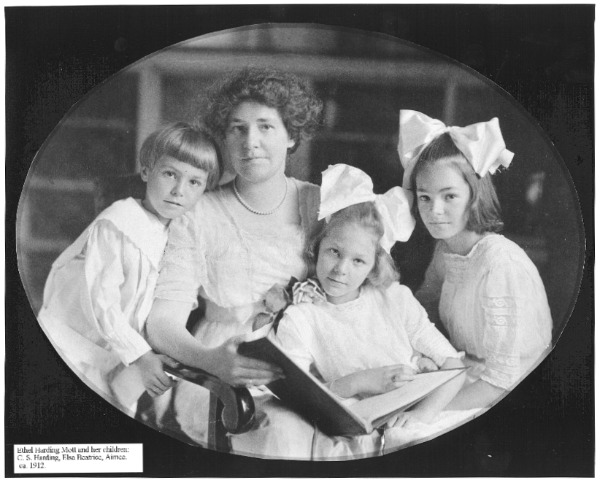
Ethel Mott with her children, Harding, Elsa, and Aimeé, circa 1912. (Ruth Mott Foundation Archives.)
Ruth & Children
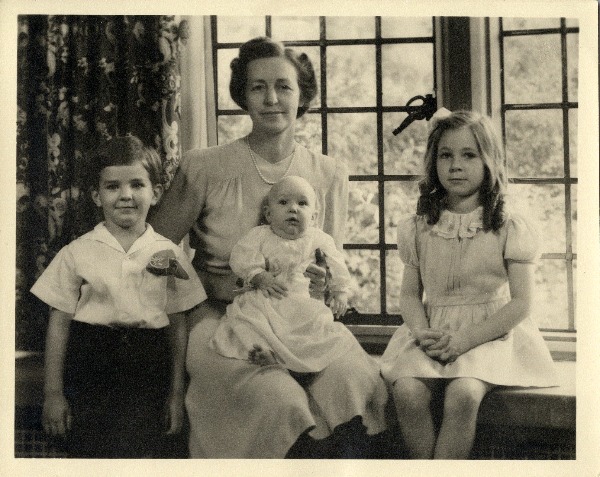
Ruth Mott with her children, Stewart, Maryanne, and Susan, 1942. (Ruth Mott Foundation Archives.)
C.S. met Ruth Rawlings at a dinner party in El Paso, Texas, in 1932. In 1934, they married and Ruth moved to Flint, where they had three children: Susan, Stewart, and Maryanne. Ruth wholeheartedly embraced Flint as her new home.
Ruth Rawlings Mott
Ruth Rawlings Mott was born in El Paso, Texas, in 1901. As a young girl, she enjoyed riding horses and dancing. Passionate about physical activity and teaching, Ruth opened her own dance studio in Texas and later earned a degree in Physical Education. In addition to supporting C.S.’s philanthropic activities, she engaged in her own charitable giving, culminating in the formation of the Ruth Mott Foundation. Ruth’s legacy of caring and providing opportunities for others is part of the ongoing work of the Foundation.
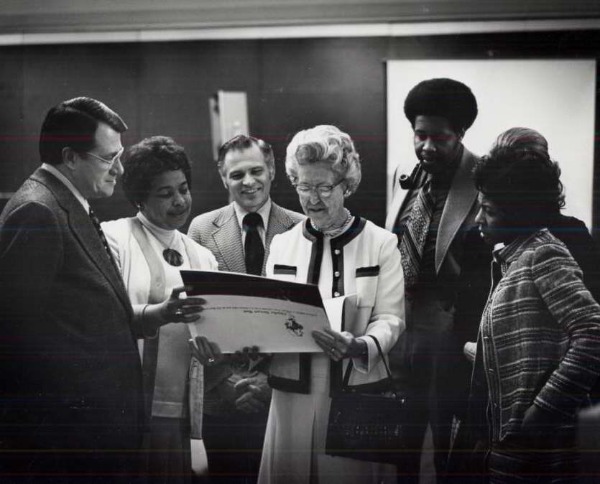
The Flint Board of Education presenting Ruth with a tribute to C.S. Mott after his death, 1974. (Ruth Mott Foundation Archives.)
A Philanthropic Family
Establishing a Legacy of Giving
C.S.’s major contribution to philanthropy was his establishment of the Charles Stewart Mott Foundation in 1926 with $320,000. Today, the C. S. Mott Foundation has funded more than $1 billion in grants around the world, with much of it directed to Flint.
Ruth Mott joined the board of the C. S. Mott Foundation, and had an interest in expanding her own philanthropic giving. She established the Ruth Mott Fund in 1979, which later became the Ruth Mott Foundation. Ruth Mott passed away in 1999, and the Ruth Mott Foundation announced its first community grants in 2001.
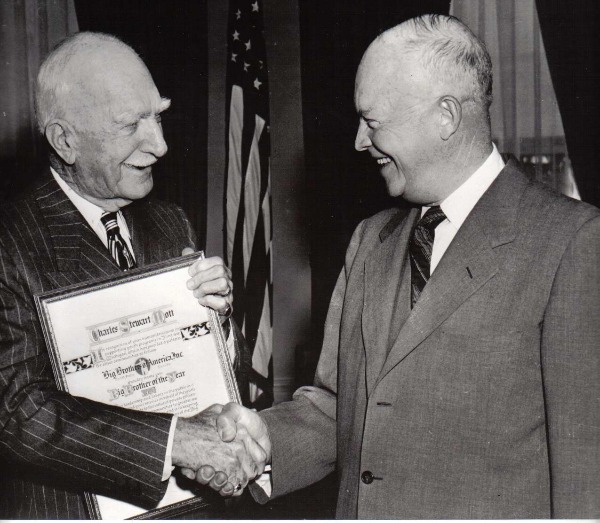
C.S. Mott receives the Big Brother of the Year Award from President Dwight D. Eisenhower, 1955. (Ruth Mott Foundation Archives.)
A Family Model of Giving
C.S. and Ethel’s children became philanthropists and established their own foundations. Aimeé, Elsa, and Harding served as trustees of the Charles Stewart Mott Foundation. Harding became its second president, succeeding his father. Harding’s son-in-law, William S. White, and grandson, Ridgway White, became the third and fourth presidents, respectively.
The children of C.S. and Ruth would also follow in their parents’ footsteps, establishing their own foundations. All three children founded charitable organizations. Maryanne Mott, their youngest daughter, is continuing her parents’ legacies as a trustee of the C.S. Mott Foundation and board chair of the Ruth Mott Foundation, among other philanthropic endeavors.
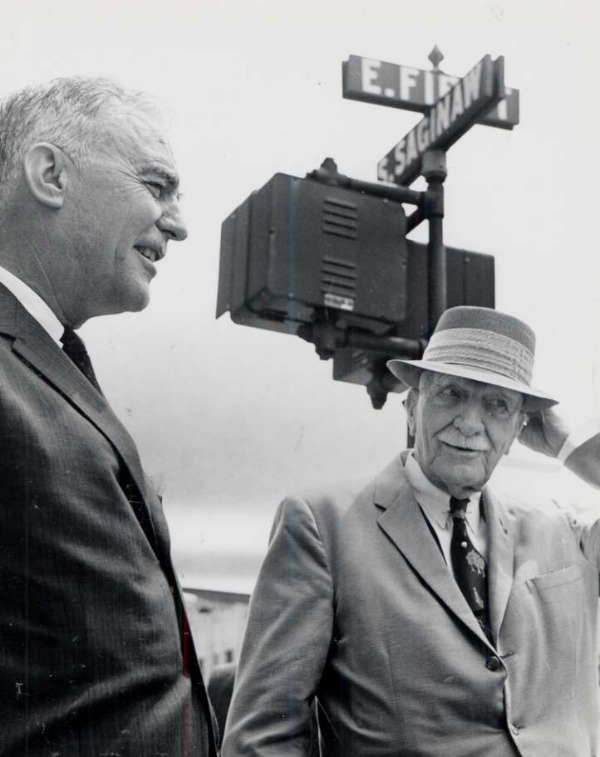
C.S. and Harding Mott in downtown Flint, 1960. (Ruth Mott Foundation Archives)
Community Members
C.S. gave not only money to support community initiatives, he also gave his time as an active member of many groups and organizations, some of which remain a part of Flint today. Below is a list of some of the organizations C.S. was connected to:
Automobile Club; The City Club; Cranbrook School Trustees (Bloomfield Hills); Elks Club; Flint Community Education; Flint Junior College Board (now Mott Community College); Hurley Hospital; Kiwanis; Masonic Lodge; Michael Hamady Club House for Stepping-Stone Girls; Mott Camp for Boys; President of YMCA; Red Feather Fund; Rotary Club; Rotary International; Stevens Institute of Technology; St. Paul’s Episcopal Church; YWCA Trustee
Ruth Mott supported many organizations herself, such as:
Antique Society of Flint (donor); Auto Club of America; Church Guild; Daughters of the American Colonists; El Paso Art Museum; El Paso Museum; Flint Institute of Arts; Flint Institute of Music; Flint Junior League; Flint League of Women Voters; Flint Symphony; Flint Symphony Orchestra Women’s Association; Historic Preservation; Historical Society of Flint (donor); Hurley Cancer Center; International Institute of Flint; Kiwanis; Kiwanis Health Camp; McLaren Auxiliary; McLaren Hospital; Michigan Arts Education Committee; Michigan Council for the Arts; Needlework Guild; Planned Parenthood; Quota Club; Wednesday Club; YWCA (Flint and El Paso); 20th Century Club
Mayor of Flint
C.S. strongly believed in the importance of being civically involved. He served Flint as mayor in 1911, 1912, and a partial term in 1918 that was interrupted by World War I, when instead of serving just Flint, he served the country by helping to organize the war effort on the home front.
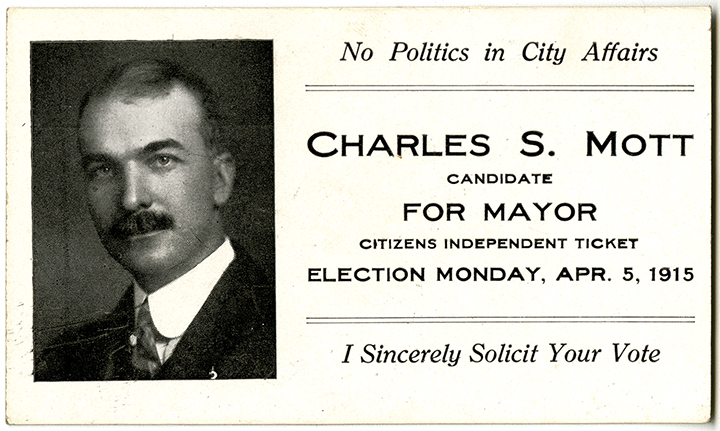
C.S. Mott for Mayor card, 1915. (Ruth Mott Foundation Archives)
The Man Who Helped Build General Motors
Weston-Mott Axle Company
When C.S. Mott’s father passed away, C.S. became the director of the Weston-Mott Axle Company. C.S. was well equipped for the job having studied mechanical engineering at the Stevens Institute for Technology. C.S. transitioned the company from bicycles to creating wheels and axles for automobiles.
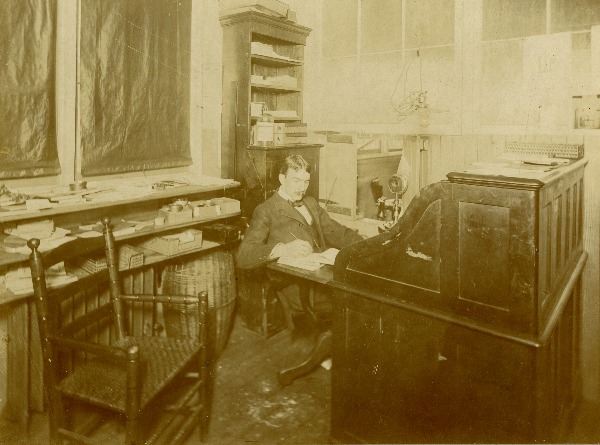
C.S. Mott in the Weston-Mott office, Utica N.Y., about 1900. (Ruth Mott Foundation Archives)
An Invitation to Flint
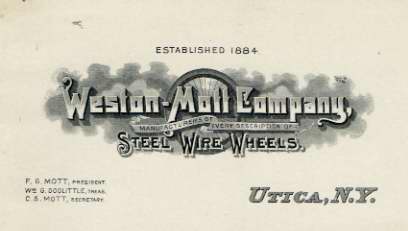
Weston Mott business card, circa 1900. (Ruth Mott Foundation Archives)
The success and quality of the Weston-Mott Axle Company attracted the attention of William Crapo (Billy) Durant. Durant wanted to create a car-making hub in Flint, Michigan, but the shipping costs to bring C.S.’s axles to Flint from Utica, New York, were impeding business growth. Durant invited C.S. to Flint to entice him to open a second factory to make his axles. It took some convincing, but C.S. eventually made a counteroffer—he would instead move the entire operation to Flint along with any workers that wanted to come with him.
Joining General Motors
When Billy Durant initially formed General Motors, C.S. sold 49 percent of Weston-Mott to General Motors as stock. As General Motors grew, so did Weston-Mott. In 1913, C.S. sold the rest of Weston-Mott to General Motors, again, for stock shares instead of cash. C.S. joined the board of directors of General Motors and served for the next 60 years.
The Legacy of the Motts
Sharing the Wealth
C.S. was born into a wealthy family, but his entrepreneurial spirit and love of innovation is what led him to help form General Motors, where he made the majority of his wealth.
C.S. used his wealth to benefit others. Instead of a lavish lifestyle, he made a conscious decision to use his money to help build up his community. By the end of his lifetime, C.S. had spent about 86 percent of his wealth on charitable contributions.
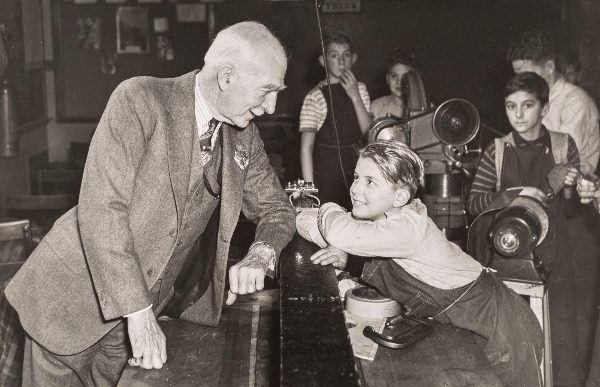
C.S. Mott talking to student Jack Grenier at an after-school shop class at Longfellow Junior High School, 1940. (Ruth Mott Foundation Archives)
Creating Opportunity
The Motts funded scholarships and grants to support both individuals and organizations in the pursuit of their goals. The Motts also created opportunities by leading community projects, such as constructing schools and creating community programs.
His role with General Motors gave C.S. direct access to other leaders in Flint. He used those connections to become more involved with the community at large.
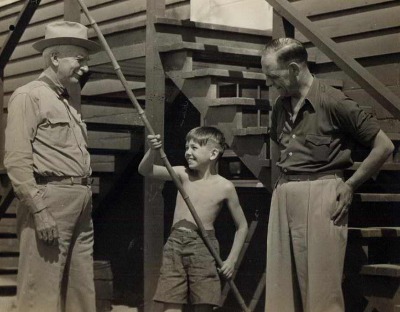
C.S. Mott and Jack Jerpe with a young camper at Mott Boys Camp on Pero Lake, 1939. (Ruth Mott Foundation Archives)
Civic Participation
The Motts were certainly privileged, but their legacy is not just about the money they gave away to charitable purposes. A key part of that legacy is how they participated in their community. The Motts are remembered today as a caring and involved family. One that was deeply engaged in their city and invited friends, family, and the community into their home. The legacy of the Motts is their extraordinary commitment to civic participation and that commitment is carried on today through their family foundations.
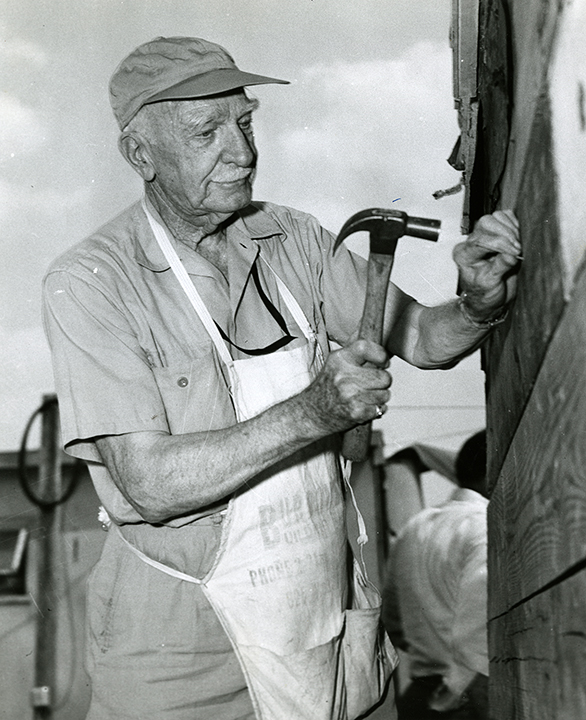
C.S. Mott nailing sheathing on a house that had been almost destroyed in the 1953 Beecher tornado that tore through Flint. (Ruth Mott Foundation Archives)
